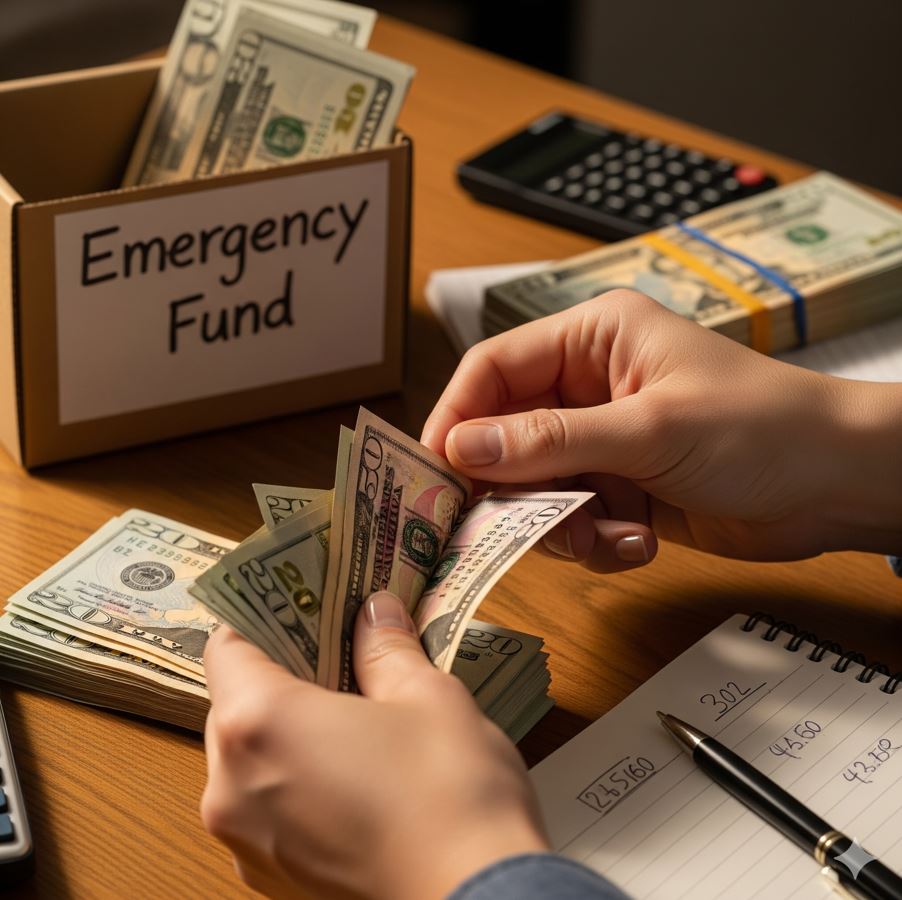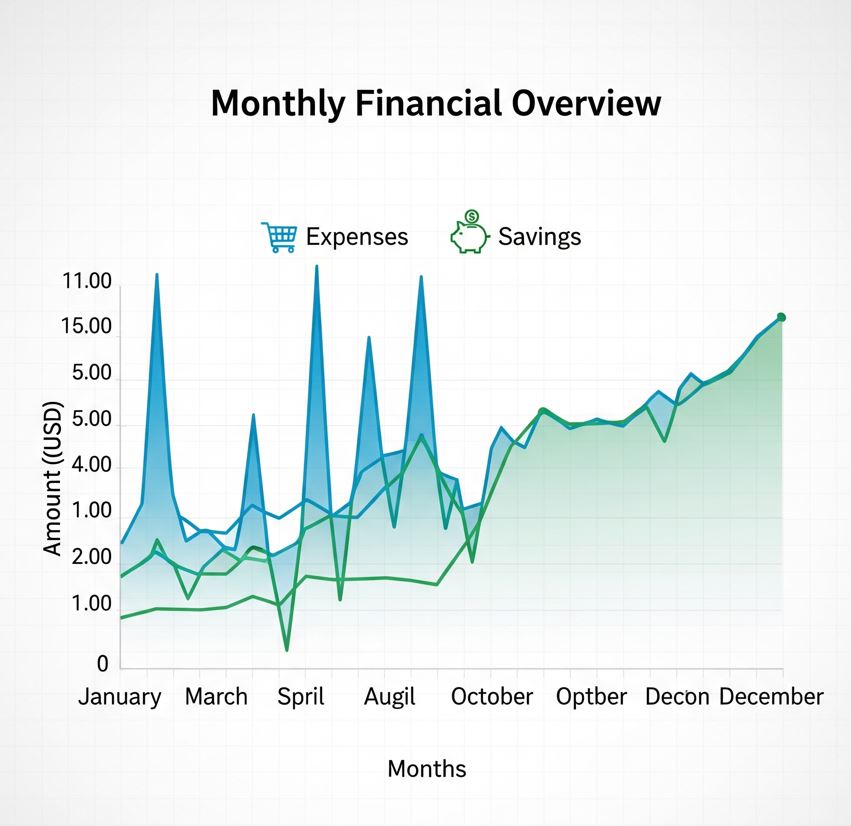What is an Emergency Fund Meaning?
At its core, the emergency fund meaning is simple: it’s a dedicated savings account meant to cover at least three to six months of your essential living expenses. It’s not for that new smartphone you’ve been eyeing or a weekend trip to Goa. It’s for true, unavoidable emergencies. Understanding this core emergency fund meaning is the first step to financial security.
Think of it this way: Rohan is a software engineer in Bengaluru earning ₹80,000 per month. His monthly expenses, including rent, food, and bills, come to around ₹40,000. For Rohan, an ideal emergency fund would be between ₹1.2 lakh and ₹2.4 lakh (3 to 6 months of his expenses). This money is separate from his regular savings and investment portfolio.
Why You Need an Emergency Fund (Beyond the Obvious)
An emergency fund isn’t just for major crises. It’s for those smaller, unexpected hits that can derail your monthly budget. A good emergency fund meaning extends to:
Avoiding High-Interest Debt: Without a fund, you might resort to high-interest credit card debt or a personal loan for an emergency. The interest you pay on that loan will be far more than what you’ll earn from any other investment.
Reduced Stress: Knowing you have a financial cushion allows you to make calm, rational decisions during a crisis, rather than panic. This peace of mind is priceless.
Protecting Your Investments: If Priya, a young professional, has to sell her mutual funds or a stock to pay for a sudden medical bill, she might have to book losses. An emergency fund protects her long-term investments from being liquidated prematurely

Step‑by‑Step: How Beginners Can Build Their Emergency Fund Meaning

Step 1 – Calculate Your Basic Monthly Expenses
List things you must pay every month. This practical step brings the theoretical emergency fund meaning to life:
Rent or mortgage
Food, groceries
Utilities (electricity, water, phone)
Healthcare, medicines
Transport
School fees or other fixed costs
Step 2 – Set a Realistic Goal
If you are new to saving, start small—maybe one month’s expenses.
Then gradually go to 3, 6 or 12 months, depending on your job security or family size.
Use the emergency fund meaning to guide your goal: it’s not how big your investment returns are, but how fast and safely you can access money in crisis.
Step 3 – Pick Where to Keep the Fund Safely
You want liquidity (can withdraw quickly), safety (low risk), and some return, though modest. This is a critical part of implementing the emergency fund meaning.
Good options in India 2024‑25:
Savings account with good interest
Sweep‑in Fixed Deposits or short‑term FDs (3‑6 months)
Liquid mutual funds or liquid debt funds for a part of it
Avoid using volatile assets like cryptocurrency or equity funds for this fund—too risky when you might need cash fast.
Step 4 – Automate & Fund It Regularly
Fix a portion of your income every month (say 10‑20%) to go automatically into the emergency fund.
Use tools like auto‑transfer or recurring deposits.
Also, when you get bonuses, gifts, or windfalls, put part of them in this fund. It helps speed things up.
Step 5 – Review & Adjust Over Tim
If your expenses increase (new responsibilities, children, higher rent), recalculate.
If interest rates improve, shift some portion to slightly better‑return options, but always maintain liquidity.
Don’t touch the fund except in true emergencies—hospital, job loss, disaster.
What to Avoid & Common Mistakes
Mixing emergency fund with regular savings or expenses.
Putting all of it in long‑term lock‑in schemes or high‑volatility investments.
Overestimating your ability to rebuild quickly—someone with irregular income may need 9‑12 months of buffer.
Recent Trends & What’s Changing in India (2024‑25)
Many banks & fintechs now offer better digital savings accounts with higher liquidity. Some even offer sweep‑in FDs that are linked to savings accounts—so you get FD‑like rates but can access money quickly. This evolution in financial products makes it easier to apply the emergency fund meaning effectivel.
Surveys show nearly half of Indians save less than 10% of needed emergency fund in their income. Smart India Money
Conclusion & Call to Action
Building an emergency fund meaning isn’t glamorous, but it’s powerful. It gives Priya peace when health surprises hit. It helps Rohan sleep better during uncertain work periods. Start small. Be consistent. Keep it safe and accessible. Once it’s built, you’ll see how it protects other goals like passive income or smart investing.
Do you already have a fund? Or are you just starting? Share your situation in the comments—let’s help each other make better financial safety nets.
FAQs About Emergency Funds in India
Q: How many months of expenses should I save in an emergency fund?
A: For most salaried people, aim for 3‑6 months. If you’re self‑employed, or have dependents, go up to 9‑12 months.Q: Can I use emergency fund for investing or paying off debts early?
A: No—those are tempting, but using it weakens the purpose. Keep it only for true emergencies.Q: Where should I keep the emergency fund so that money is both safe and accessible?
A: Use savings accounts, sweep‑in FDs, or part in liquid mutual funds. Always ensure part is instantly accessible.Q: What about inflation? Won’t the fund lose value if returns are low?
A: Yes, inflation reduces buying power. But the emergency fund meaning prioritizes safety & access—not high returns. Once you have a safe buffer, you can plan separate investments for growing wealth.Q: How often should I review or increase my emergency fund?
A: Whenever your expenses rise (rent, bills, family size). Also when your income increases: you can divert more to the fund.Q: Is ₹1 lakh emergency fund enough for a young person?
A: Depends on your monthly outgo. If your expenses are ₹15,000/month, then one lakh covers ~6‑7 months. Good start. But if you have extra responsibilities, you might need more.Q: Can I park part of emergency fund in gold or crypto?
A:Better not. Gold might be less liquid; crypto is volatile. You might lose big in short time. Safe & liquid is priority, which is the core of the emergency fund meaning.Can I use my emergency fund for a vacation?
No. The purpose of an emergency fund is to cover a crisis. A vacation is a planned expense and should be funded from your regular savings or a separate travel fund.
Is an emergency fund the same as a savings account?
While you can keep your emergency fund in a savings account, the emergency fund meaning is different. It’s a separate, dedicated stash of money that you do not touch for routine expenses or non-emergencies.
Can I invest my emergency fund in the stock market?
It is highly discouraged. The stock market is volatile. You could lose a significant portion of your fund right before you need it. The purpose of an emergency fund is safety, not growth.
You might be interested in reading this post as well:
How to Invest in Real Estate with Just ₹10,000 in India 2025: A Smart Beginner’s Guide
Disclaimer: This article is for informational purposes only and does not constitute financial advice. Always consult a SEBI-registered financial advisor before making financial decisions. FintechRupee.com is not liable for any financial loss based on this content.
